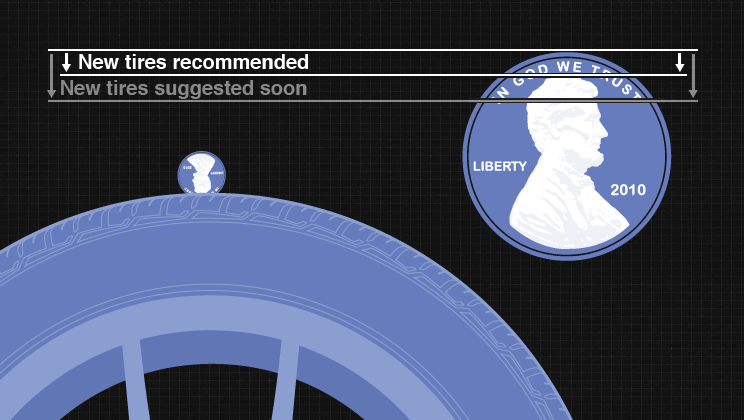How to Check Tire Tread Depth

Good and healthy tires mean that they will drive optimally, providing grip, thus keeping you safe. To see how much life there is on your tires, the first thing you should check is the tread depth.
What is Tread Depth?
All road tires have grooves, the lowest part of the tire, responsible for providing the performance in non-ideal conditions, like rain and snow.
When you drive, every tire gets worn down as small pieces of the tire get stuck to the road. This is quite normal and happens on a microscopic level throughout the tire’s lifespan. Over time, the tread depth will become too low, and those tires will no longer be safe enough to drive them.
Tread Depth by the Numbers
Here in the US, the tread depth is measured in inches divided into 32 increments. From the factory, the tread depth can vary based on the type of tire or the manufacturer.
In most cases, road tires can range from 10/32 to 12/32 inches, and the more extreme off-road tires can go as much as 15/32 inches.
With the maximum out of the way, let’s look at the minimum. US laws in all states say that the tread depth should not be less than 2/32. At that point, the tire loses its properties and is no longer deemed safe to drive.
How to Measure Tread Depth? The Penny test
The most precise way of measuring is by using a tread depth gauge, as you’ll get the most accurate readings. While you can find these gauges reasonably cheap, not many people have them. Next up are indicator markers on the tires. Some manufacturers provide tread indicator markers that give you an estimate of how much the tire is worn down. And there’s the third was, using pennies.

For the lowest tread depth required by law, 2/32 inches, you’ll need a Lincoln penny. Place it in the groove with the head upside down and facing towards you. If the head is not covered and you can see all of it, it means that you have 2/32 inches or less, and you need to replace those tires as soon as possible.
To get an earlier sign of how worn your tires are, especially if you often drive on wet roads, then you’ll need to have at least 4/32 inches of tread depth. To check this, you’ll need a quarter. Place it in the grooves with Washington’s head upside down. If the highest part of the tire is at the same height as the hairline, you have 4/32 inches of tread.
For snowy conditions, you’ll want to have 6/32 inches, and you’ll need a penny with the Lincoln Memorial. Place it in the groves and check where the line is. If you can see the entire structure, it means you have 6/32 inches of tread depth or less.
FAQs
What is the Minimum Safe Tread Depth?
For dry road use, the minimum tread depth required by law is 2/32 inches.
What is a Bad Tread Depth?
Anything below 2/32 inches is considered unsafe to drive.
When Should You Replace the Tires?
It depends on the conditions you drive. The absolute minimum is 2/32 inches. For wet driving, you should have 4/32, and for snow, it is recommended to have at least 6/32 inches.






